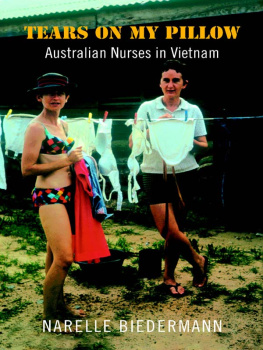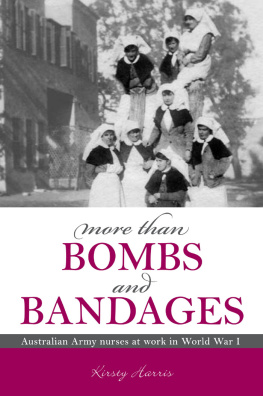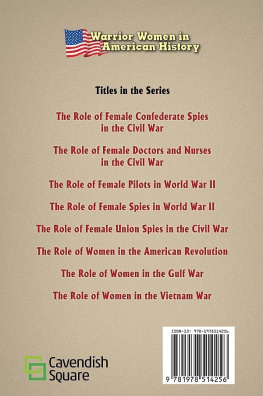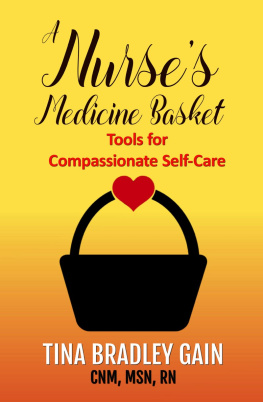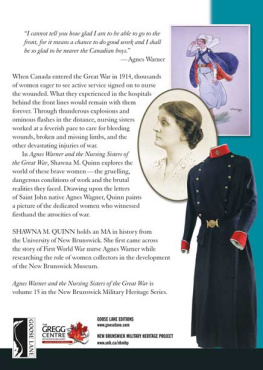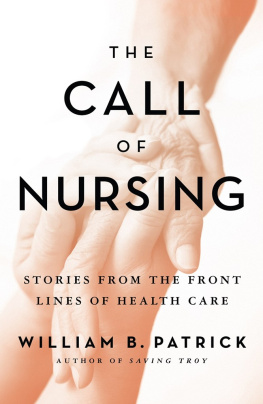
About the book
Most books that look at the involvement of Australians in the Vietnam War rarely allude to the role of nurses. But war and nursing are unequivocally linked. A total of 43 Australian Army nursing sisters were sent to Vietnam between April 1967 and November 1971, undertaking tours of up to 12 months. The nurses were assigned to a military hospital in a war zone with little advanced preparation, particularly as clinicians with exposure to trauma, critical care or theatre. The contribution of these women undoubtedly affected many soldiers in profound ways.
Tears On My Pillow describes the experiences of nursing in the Vietnam War using the words, voices and photographs of these servicewomen. These veterans tell tales of femininity interspersed with the reality of the military environment through their stories of trauma, distress, tears and grief that went on for many years, and stories of underwear, fun and the basic things in life.
Contents

I dedicate this book to the wonderful women whose stories
are told here, and to all service nurses who have served,
suffered and died for the protection of humanity.
Foreword
W HENEVER THE A USTRALIAN A RMY has deployed on operations, its nursing sisters have deployed with it. When the various state militia deployed to South Africa, some nursing sisters even paid their own fares to accompany the troops to provide the care that is inevitably required when soldiers go to war. Nursing sisters were an integral part of the Australian Army when it was formed on the field of battle in 1901, nursing the wounded and sick back to health in conditions which by todays standards were quite primitive indeed.
That same dedication was experienced by the Anzacs wounded at Gallipoli, both at Lemnos within the sound of the battles on the peninsula and at base facilities at Alexandria and Heliopolis in Egypt. In France and Palestine during World War I and in North Africa and the Pacific in World War II, the dedicated sisters and nurses of the nursing services tended the wounded, often in appalling conditions.
The nurses who deployed to Vietnam typified the make up of the Australian Army at that time. Some were veterans of service during World War II, and of the occupation of Japan and all the intervening campaigns in which Australia was involved. For others, it was their first experience of military operations, but for all who went there, Vietnam was an environment very different from anything they had previously experienced.
Although medical technology had improved considerably since South Africa, Vietnam provided its own challenges to the nurses who were required to serve in conditions significantly less comfortable than those in which they had trained and from which they volunteered for military service. Yet they soldiered on, and many an Australian veteran is grateful for the dedication and care that these nurses provided. This is their story, told by them through someone who is continuing the tradition of Australian Army nursing.
Not only is it a record of the service of the nurses of Vietnam, this book will add immeasurably to our understanding of nurses of the Royal Australian Army Nursing Corps and of the role they have always played. And I am sure that whatever the future may ask of the Australian Army, the members of the Royal Australian Army Nursing Corps will continue to uphold those great traditions, inspired by those whose service this book records.
Lieutenant General Peter Leahy, AO
Chief of Army
Introduction
T EARS ON M Y P ILLOW IS THE culmination of a previous journey. The book began as an idea while I was researching the experiences of Australian Army nurses who served in the Vietnam War for my PhD, which I was awarded from James Cook University in 2001. After spending so many hours meeting with some of these women who served as nursing sisters during one of Australias more controversial wars and researching the background to their wartime lives in Vietnam in archives and libraries, I could see that this was indeed a fascinating story, and one that people seemed genuinely interested in hearing about. I have presented elements of it to academic and nursing audiences over the past five years at conferences in Canada, the United States of America, New Zealand and Australia. It has always been extremely well received by academic and nursing audiences, and has stimulated further discussion on the experiences of nursing in war. Yet the notion that I could also tell these nurses stories through a book that could reach the general community seemed like a distant dream. I knew that there was a wider audience, particularly anyone with an interest in the military or nursing, but was not sure how to take it to this next level. I have lost count of the number of times over the past few years that I have sat next to someone on a plane and had them express more than just a passing interest in what Australian Army nurses did in the Vietnam War when I mentioned that that was my area of research. I have published articles in newspapers and nursing journals and have been overwhelmed at the response. On Anzac Day 2002, a story about my study, in which several Vietnam veteran nurses and I were interviewed, appeared on a national television program. For me, it meant that I had managed to achieve one of the most highly sought-after objectives of any researcher: for the findings of ones research to be recognised by, and deemed relevant to, the general community.
When a Senior Editor at Random House, Roberta Ivers, contacted me the day after this program was televised, I was left overwhelmed and speechless. Here was my chance to take this chronicle even further and ensure that the nurses would leave a lasting contribution to the historical record, ensuring that future generations also learn about the experiences and contributions of some unknown, yet important, Australians. Not only that, I was fulfilling a promise made to the nurses who had invited me into their homes and shared their memories of their time in the Australian military hospital in Vung Tau during the Vietnam War. I truly believe that this was the least that I could do for these women. As a researcher, I know that it is not very often that we can make our research meaningful for those who participated in the process. To be able to do this was for me the epitome of success. I remember one of the nurses commented to me when we first met that she was surprised that anyone would be interested in her story. To her, what she did in Vietnam was simply what she had been asked to do as a nurse, and nursing is often an invisible job. Yet to those for whom the nurses in Vietnam cared, they were far from invisible. To the patients, these women provided comfort, support, hope, and a gentle reminder of home. Through their caring actions, these women brought a touch of love and humanity into the harsh and often frightening world of war. Ask any soldier who has been cared for by a nurse in war how important she was to him he will tell you very quickly how special the nurses were, how important their kind words, wide smiles, gentle hands and womanly presence were. Many will tell you how, if it had not been for the nurses, they would not have had the courage to continue their painful fight to return to health. Some will tell you how they fell deeply in love with the angels who stood by their bedside and held their hand while the war continued on around them. But all will tell you that what the nurses do in a war zone is vital and that they are all undervalued. The stories of nurses and nursing work in war are important, and people do indeed want to know more about what it was like for nurses in wars, if only to begin to understand the experience from their perspective. The stories of nurses in the Vietnam War are no exception.

